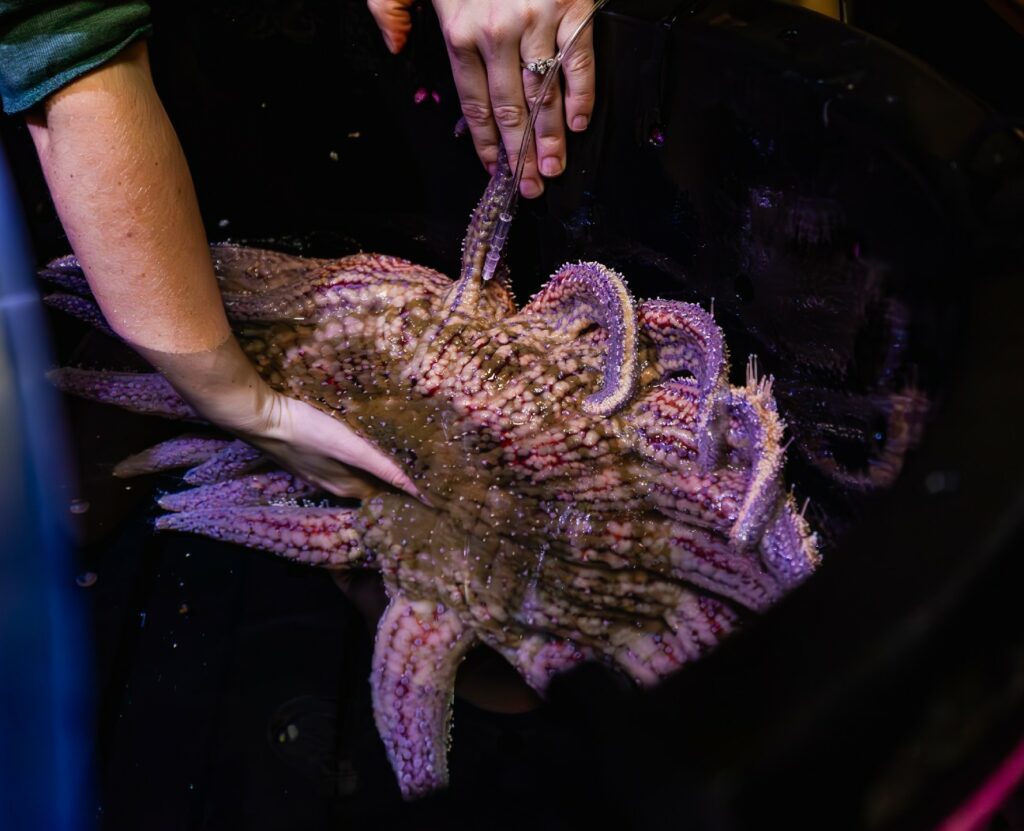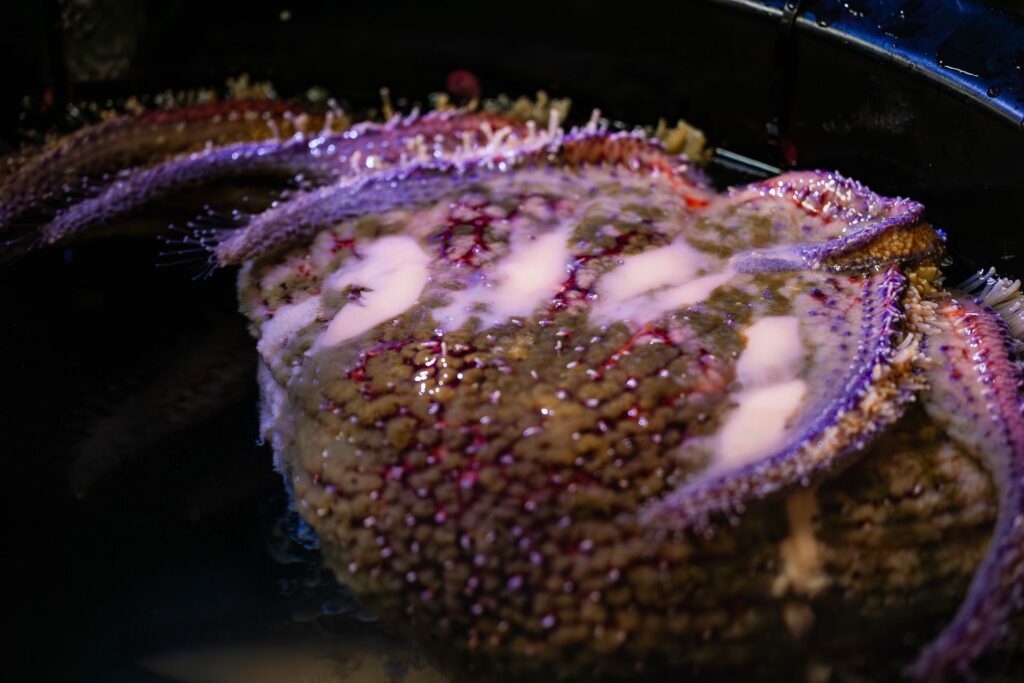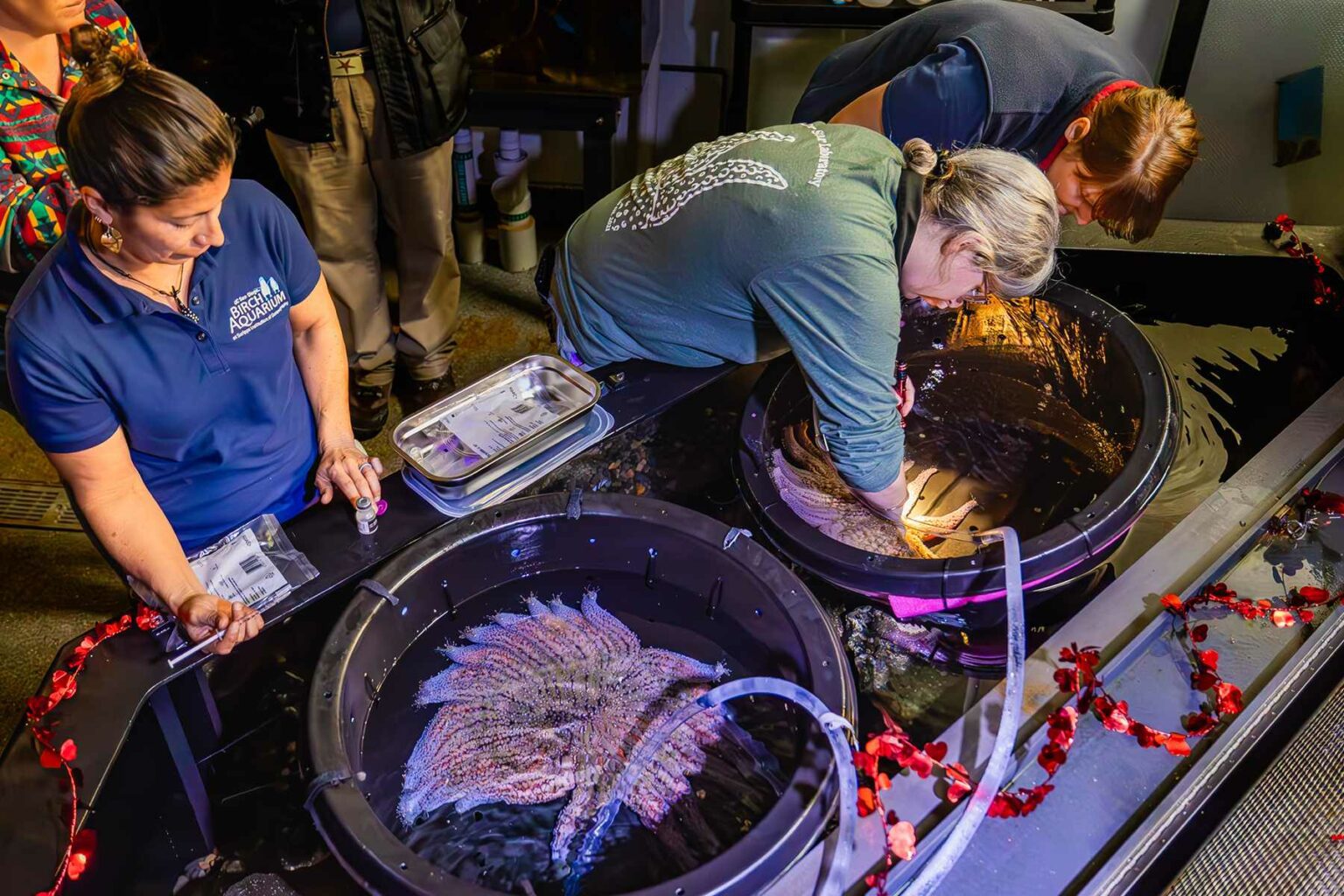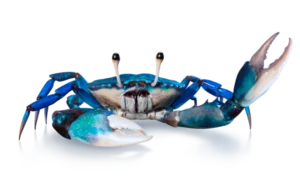Five Californian scientific bodies have come together in a bid to reverse the fading fortunes of one of the world’s biggest starfish, the sunflower star.
They have just announced that they chose Valentine’s Day (14 February) to spawn and cross-fertilise the sperm and eggs of a male and a female starfish, and succeeded in producing large quantities of fertile embryos. These will be deployed to boost future populations.
Found in the north-eastern Pacific, sunflower stars (Pycnopodia helianthoides) can have an arm span of up to 1m. Adults usually have 16-24 limbs and vary in colour.
By keeping predatory sea urchin populations in check, sunflower stars are key to balancing coastal kelp forest ecosystems. However sea star wasting disease has already slashed the population by more than 90% in the past decade, hence the species’ IUCN Critically Endangered status.

The organisations involved in the project are the California Academy of Sciences (CAS), the Aquarium of the Pacific, San Diego Zoo Wildlife Alliance, the Sunflower Star Laboratory and the Birch Aquarium at Scripps Institution of Oceanography at UC San Diego, where the spawning event was conducted.
The embryos were then taken to the CAS’s Steinhart Aquarium, so that its biologists could employ their larval-rearing expertise to raise the sea stars to adulthood.
In the process they hope to determine the best rearing practices for the species, enabling future generations of lab-spawned sunflower stars to be outplanted back to the state’s kelp forests.

The embryos had already developed into free-swimming larvae within their first two days of life but will take some three months to develop into their next, five-armed phase.
“While this is the first time Steinhart Aquarium has housed sunflower star larvae, we’ve raised a number of animals through our larval rearing programme, from corals to bat stars to sea urchins,” says curator Kylie Lev.
“By replicating the aquaculture techniques we’ve developed and adjusting them to fit the specific needs of sunflower stars, we can increase their population numbers and bolster their genetic diversity.”
The Steinhart team have found that the best way to raise large quantities of larvae in the required swirling water but in the smallest space is to employ an inexpensive kitchen appliance – an automatic pan-stirrer.
The CAS’s Institute for Biodiversity Science & Sustainability will genetically sequence the starfish at both their larval and settlement stages to identify markers that could contribute to the survival of the species.
Sunflower stars are cannibalistic – so from May, when the babies are moved to an underwater nursery, they will be have to be kept apart to avoid undoing all the scientists’ good work.
The sledgehammer approach
The take-over of purple sea urchins in California kelp forests vacated by sunflower stars has resulted in what has been described as “ecologically sanctioned mayhem” among local divers, who have been volunteering to smash the urchins with hammers and ice-picks.
“If you’re angry, it’s a cathartic way to get it all out,” one diver told Associated Press – but senior scientist Kristen Elsmore of the California Department of Fish & Wildlife said she approved of the approach.
“This is really setting the system up to hold onto the kelp that we do have until we’re in a better place,” she said. “The ultimate goal is for these systems to really be self-sustaining and the restoration part to really just be giving it a gentle nudge in the right direction.”
Critics are concerned that crushing the urchins could simply spread their eggs over a wider area, though scientists say they have seen no signs of this happening – but they also insist that nothing can replace a natural predator such as the sunflower sea star.
Also read: Reef Star Wars, $9.8 Million Program to Protect Corals from Starfish, Mesmerising Feather Starfish, What is Eating The Coral








